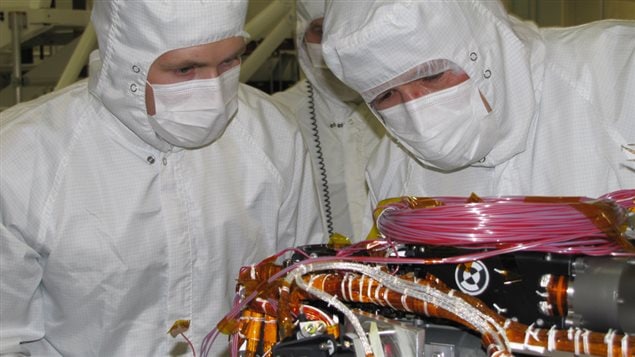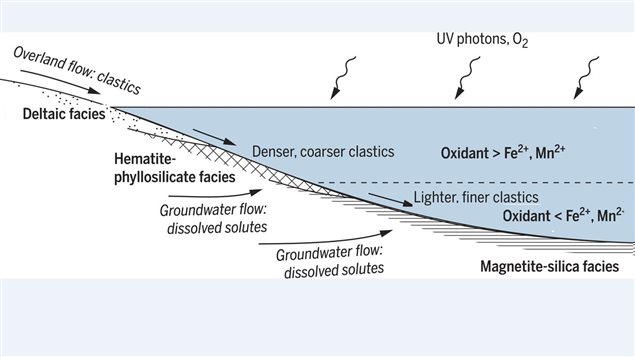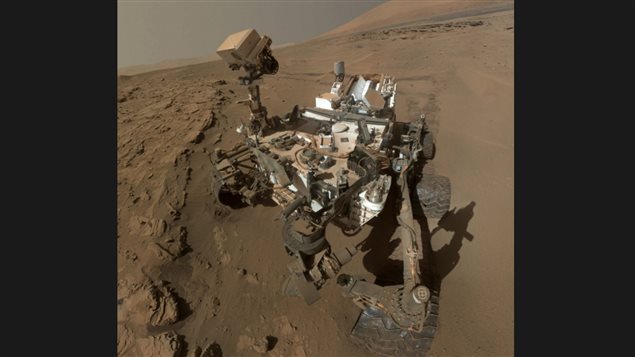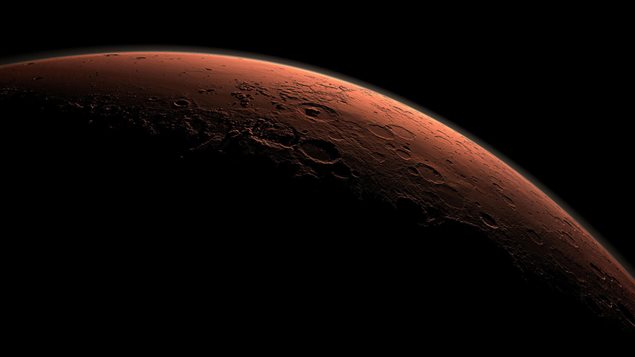In 2012 a major and highly technical machine landed 250 million kilometres away from Earth, on the surface of Mars.
The Mars “Curiousity” rover landing was a success and the equipment began transmitting data back to Earth.
Its main mission is to determine if there was (or is) potential for habitable life, and that includes the indication of water on the red planet.
Professor Ralf Gellert (PhD) is aListenn associate professor in the Physics Department at the University of Guelph, Ontario, and instrument-lead for the Alpha particle x-ray spectrometer on the Mars rover.

Although it now seems like a barren desert planet there has long been speculation that Mars once had water.
Now, more and more evidence is showing that about 3 to 4 billion years ago, there was indeed water there
In studying the data of the 154-kilometre wide Gale crater being gathered and sent back by the rover, professor Gellert says it seems clear the crater was once filled with water.
The research was published in the June 2 online edition of Science under the title, “Redox stratification of an ancient lake in Gale crater, Mars” (abstract HERE)

Professor Gellert says the rover is slowly climbing a central mound in the crater. He say in analysing the rock and chemical sediments it seems clear this would have been an ancient shoreline with layers (stratification) mimicking the various layers of a lake bottom and shore on Earth and also shows changes in the environment on Mars those billions of years ago.

-caption= Model of physical transport and geochemical processes occurring during deposition of the Murray formation. Fresh water and clastic materials are delivered by overland flow from fluvial systems; dissolved solutes enter the lake by groundwater seepage. Redox stratification results from differences in the mass balance of atmospheric oxidants and oxidizable cations, causing redox-sensitive mineral assemblages to vary as a function of lake water depth. Flow deceleration results in sediment fractionation into distinct sedimentological associations; coarser, denser clastic materials are deposited closer to shore (hematite-phyllosilicate facies), whereas finer, less dense clastics travel further into the lake (magnetite-silica facies). UV, ultraviolet.

Professor Gellert notes that the earlier “Opportunity” Mars rover found evidence of very acidic water at its landing site, something like battery acid he says.
However, the Gale crater water seems to have been more like the fresh water we know on Earth and favourable for any life that could have formed there.
He says it appears that habitable conditions for the earliest and simplest forms of life may have existed on Mars a billion years ago at around the same time as those conditions were created on Earth. He says that would mean two “habitable” planets in the solar system. If that’s the case it leads to wider philosophical questions about life forms on planets elsewhere in the universe, he added.

He also says the Mars missions seek to understand what then happened on Mars, where that water went and why, and if some might be underground, and possibly available to manned missions to Mars.
Professor Gellert points out that the rover’s Alpha Particle X-ray Spectrometer (APXS) was built in Canada, and has proved invaluable in gathering data.
additional information







For reasons beyond our control, and for an undetermined period of time, our comment section is now closed. However, our social networks remain open to your contributions.